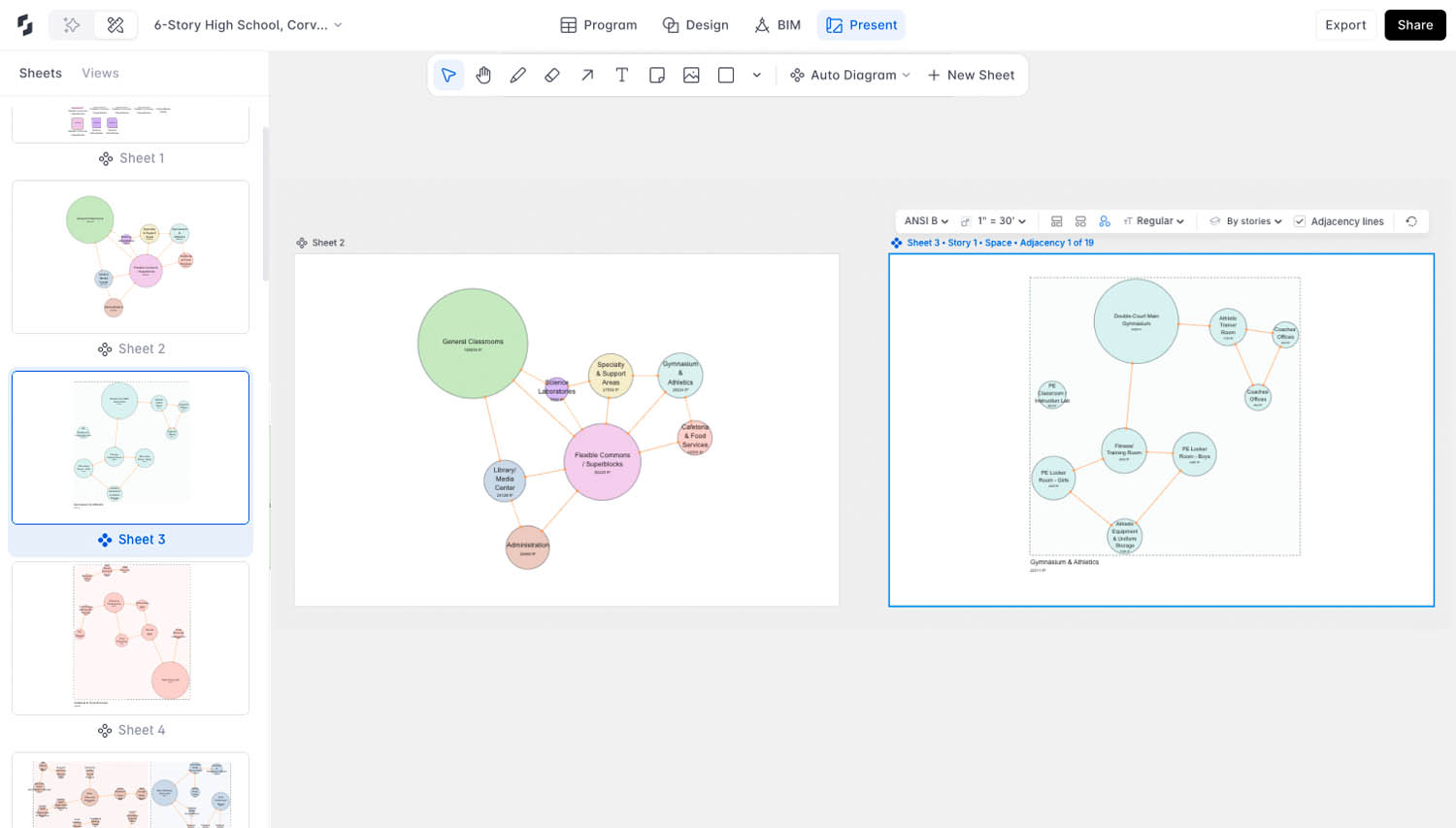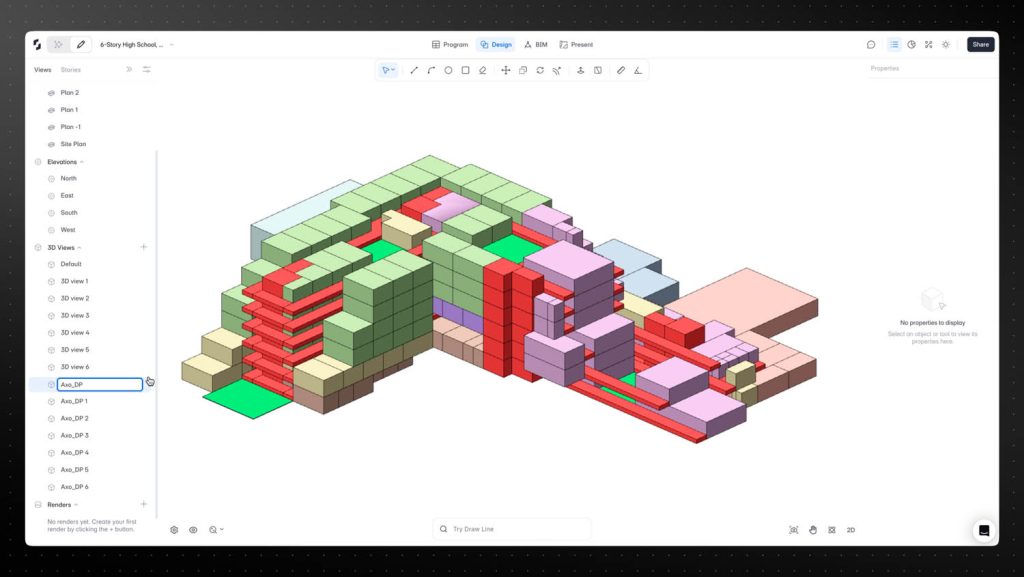After years of AI hype, we’re starting to see AI technology appear in established BIM applications. Autodesk is already on the case, but Revit’s competitors are not far behind. AEC Magazine spoke with Snaptrude CEO Altaf Ganihar about the AI capabilities that his company is about to launch
Artificial intelligence and machine learning promise so much for automation and retention of knowledge in the future – but right now, we’re still looking for killer features and applications that can be used by everybody.
Key vendors such as Autodesk are starting to provide clues as to how these might look, in the form of new AI capabilities in specific workflows. In this first phase of deployment, we expect to see AI applied as a copilot in defined functions and workflows and delivering productivity benefits in very generic workflows, particularly those associated with conceptual and querying tools.
The likely long-term implications of AI in the AEC industry are much harder to assess. Customers will have access to software on demand, where AI will create custom programmes to solve client-specified problems, without the need to acquire or download a vendor’s generic application. New levels of automation will significantly challenge current thinking around architectural billable hours as it proves its ability to make decisions based on huge numbers of competing constraints far faster than any human. It will radically transform detail and drawing output.
Find this article plus many more in the September / October 2025 Edition of AEC Magazine
👉 Subscribe FREE here 👈
Recently, AEC Magazine caught up with Snaptrude CEO Altaf Ganihar to discuss the company’s imminent AI update and its likely impact. We kicked off the conversation with a brief look at Snaptrude’s development to date and how its new AI tools are designed to complement the highly workflow-led nature of its BIM tool.
Four phases in Snaptrude
In this year’s release, a lot of thought has gone into how Snaptrude breaks down the design process into distinct phases and at which point new AI updates should help automate and rationalise Snaptrude’s workflow methodology.
Phase 1 focuses on concept design generation via AI (Autonomous Mode). This process begins when the user inputs a prompt (such as an RFP, a brief or an Excel-based room schedule) that describes the desired building. This could be a seven-storey culinary institute that includes student and faculty housing at a particular university or college, for example. This process involves:
Setting data and constraints. Here, accurate site data, including the plot’s parcelling and zoning codes, is loaded. Snaptrude then studies the site context and considers the requirements, automatically creating an RFP by making assumptions (if no specific rationale is provided) and considering factors such as climate, floor allowance, flood zones and the plot’s zoning code.
AI orchestration. A master AI orchestrates the sequence, instructing specialised AI agents what to do and when. This orchestration involves physics and climate-aware models, as well as large language models or LLMs, to perform tasks such as creating the initial programme, conducting climate analysis, studying adjacencies, and generating a massing envelope.
Output. The autonomous AI process generates a working model, aiming for an LOD 250/300 ‘ish’ model, which follows adjacencies and complies with zoning/ building codes. It typically delivers this output in about seven to ten minutes. The AI also provides reasoning for its decisions, and presents diagrams, which serve as the first few presentation slides for a developer.
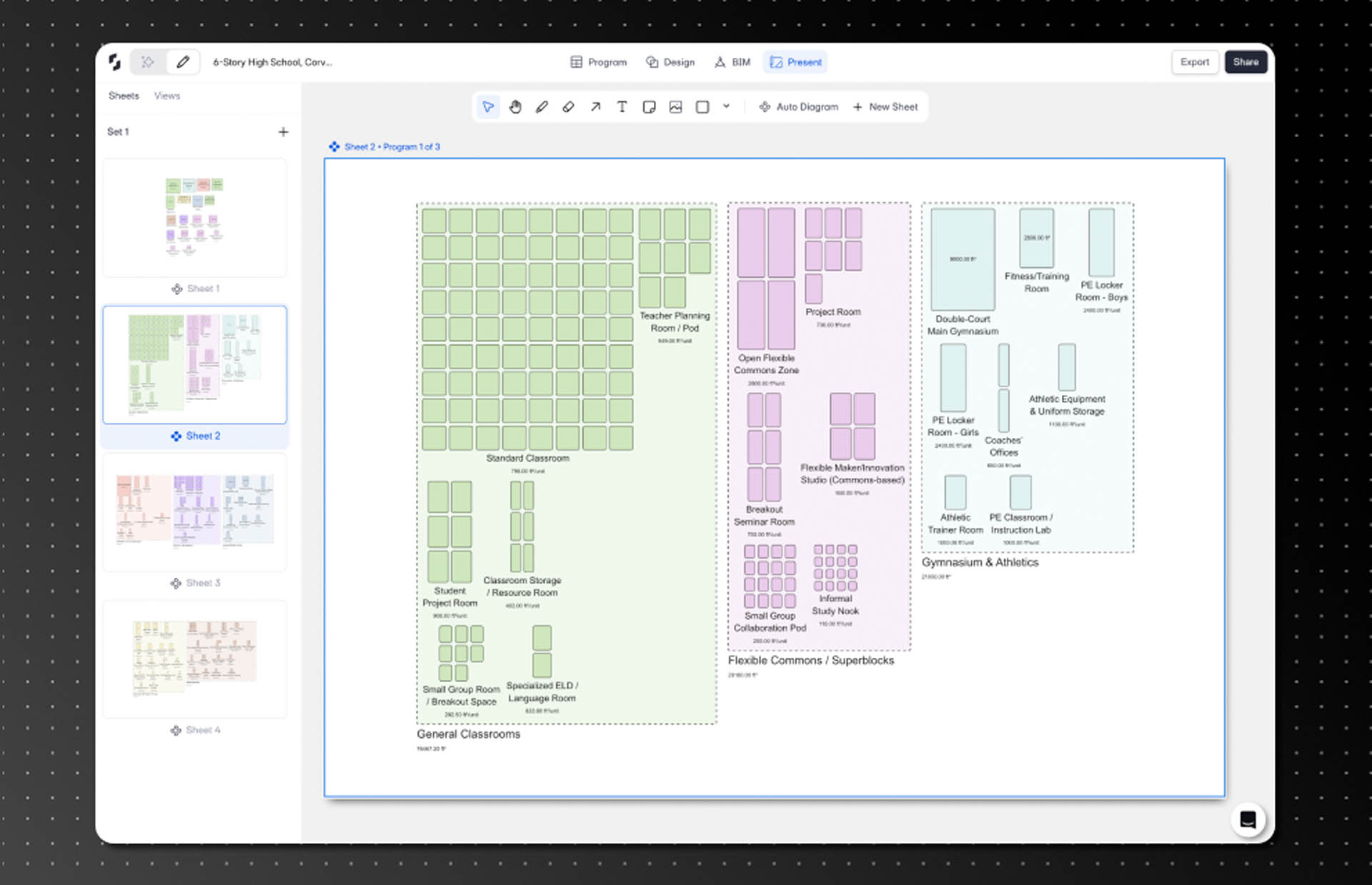
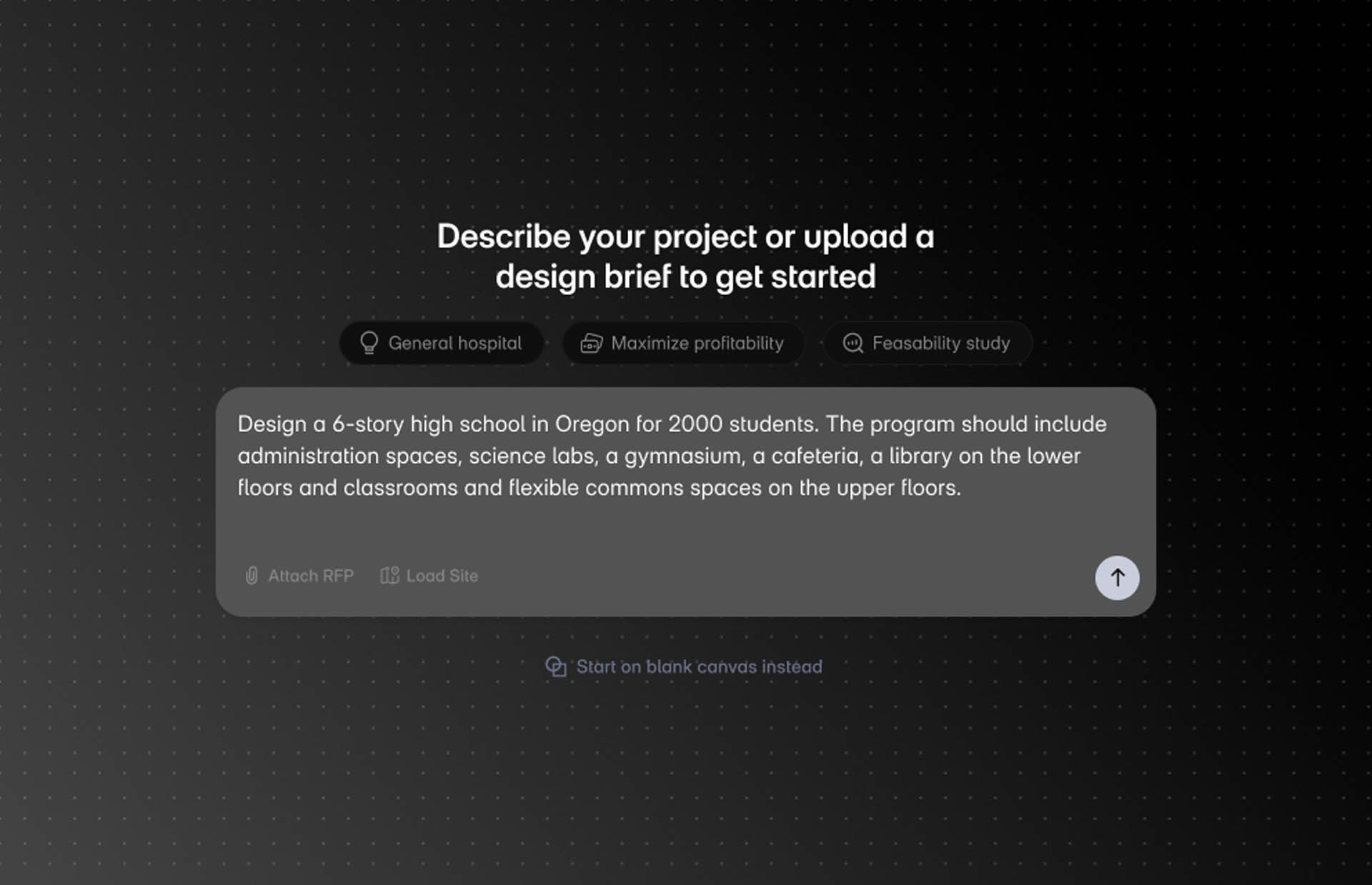
Phase 2 involves refinement and artistic input, conducted in design/editing mode by an architect. This involves:
Envelope editing. The initial envelope generated by the AI is considered a ‘draft’ and can be modified to make it ‘more fancy’ by using tools such as Boolean operations, or importing complex elements such as facades from a tool like Rhino.
Repacking/resolving. When an envelope is altered, the AI understands the new geometry and can be instructed to repack the programme (space planning) within any new constraints. If the required programme cannot fit, the software flags up the violation by showing that ‘target versus achieved as gone down’ in the programme mode.
Delegation. The architect can delegate specific tasks back to the AI, which refines or applies checks, such as researching building codes, showing best-practice adjacencies or providing floor-planning for a specific floor.
Phase 3 aims at achieving a more detailed state and sees the project move into BIM mode. This involves:
Detailing and compliance. At this stage, elements like doors, fire exits and detailed components are addressed. The AI helps transition the design by choosing appropriate detailed components, such as fire-rated walls for corridors, based on metadata and historical project data (for example, from ten previous hospital projects).
A lot of thought has gone into how Snaptrude breaks down the design process into distinct phases and at which point new AI updates should help automate and rationalise Snaptrude’s workflow methodology
Model quality. The goal is to reach an LOD 300 model, which requires more detailed Revit families, though users can manually make changes, as the environment is a full authoring tool. The software uses its own data schema to understand and rationalise all geometry, including imported Revit files, helping it make decisions based on metadata such as construction cost, demolition cost, and procurement processes.
Finally, in Phase 4, we see the project move into presentation mode for documentation. Here, we see AI driving auto-documentation and autodrawings, with the system automatically creating floor plans, 3D views and adjacency and bubble diagrams. The user can then configure these.
The goal is that, right up until the schematic phase, users should not have to touch traditional BIM tools such as Revit.
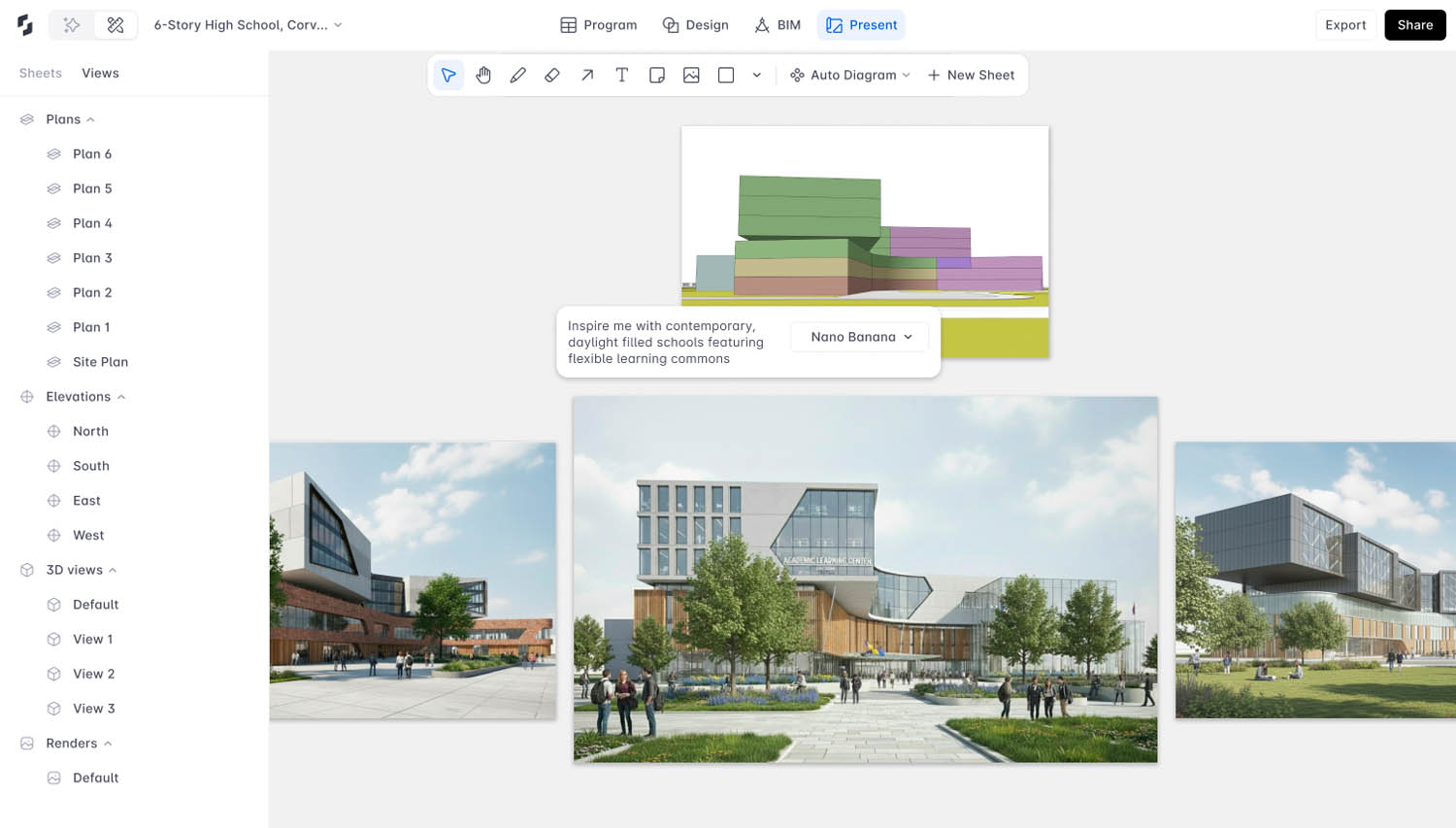
Q&A with Snaptrude CEO Altaf Ganihar
AEC Magazine: Altaf, as Snaptrude has developed, you and your team have clearly rethought many of its workflows and features. So what can you tell us about how AI will change the way that Snaptrude sees next generation BIM tools?

Altaf Ganihar: Snaptrude’s first AI deliverables are aimed to automate much of the early concept design phase, combining various critical checks into a single process. What we are launching in October 2025 will do most of the concept design, literally taking users from an RFP to an LOD 300 model. And it’s not just some random shape that is generated, but something that follows adjacencies, something which looks at zoning codes, building codes, and takes into account the climate to generate a building option, automatically, in seven to ten minutes. It’s very different and much quicker than manual BIM 1.0 development.
The strength of the software lies in its comprehensive, connected ecosystem, initiated by a spreadshee-tlike environment. This drives the programming, the massing tool, the early BIM tool, and the presentation and Miro-like interface to do documentation. Everything is live. So you make a change in your spreadsheet, design updates, presentation updates, render – it’s all here. You can tell the full story without having to go out of Snaptrude.
AEC Magazine: Is it fair to say that you rethought Snaptrude and, instead of a single application, you chose to break it down?
Altaf Ganihar: Snaptrude is built on four modes: programming to host data, design for geometry, BIM for detail, and geometry and presentation for documentation. We built it such that each one of these modes is an independent product, but also connected, and each one of them has AI agents to do tasks.
Regarding geometry flexibility, Snaptrude has added Boolean functions and integrates Rhino geometry both ways, allowing users to import complex designs, edit them in Snaptrude and potentially take them back to Rhino.
(Note: Altaf added that Snaptrude is also working on allowing users to import a complex Rhino envelope and reverse-engineer the internals, which we think would be hugely useful to signature architects using a Rhino-first approach.)
AEC Magazine: Many people are worried about AI’s propensity to hallucinate. Is this a concern for you and how does Snaptrude address this risk?
Altaf Ganihar: Snaptrude’s approach uses a sophisticated, multi-layered AI architecture to ensure outcomes are constrained, deterministic and compliant with real-world physics and codes. The way to achieve this is if you follow the recent AI developments closely, and if you layer AI using sophisticated techniques, then you can get very little hallucination – in fact, almost no hallucination.
The Snaptrude system uses multiple AI models. The only technique which you need to use is to have one AI to do creation and another AI to critique it. That critiquing should be based on either actual geometry or numbers, something deterministic. It’s a combination of AI modules. Some of them are LLM. Some of them are not LLM. Some of them we had to build, ones that use physics and climate-aware models. They’re all run by this master AI which figures out which one to use and when.
AEC Magazine: And what about the concern that AI will eliminate jobs in the AEC industry, with automation meaning that fewer architects are required?
Altaf Ganihar: The goal of the AI is not to replace the architect entirely, but to automate repetitive and ‘boring’ tasks, allowing professionals to focus on creativity. We position our AI as a helpful collaborator or intern. You are the principal architect and you do the creative jobs. You don’t want to sit and do research on building codes and fit this mass in. Well, delegate that to the AI, come back after a coffee, and then edit the design. You should be able to go from an RFP to a design presentation in a few minutes, and take as much control as you need, because at the end of the day, you’re the architect.
AEC Magazine: The whole business model for software firms in an age of AI has still to be worked out. On the face of it, it would seem to remove the need for licences with automation. What do you think the business model of the future might look like?
Altaf Ganihar: I think we have to move away from subscriptions. We are moving away from subscriptions with this launch. The planned pricing structure involves tokens, and customers can use these tokens however they want, in terms of paying for processing.
AEC Magazine: For architects who charge per hour, might it not be problematic that AI is not only automating but also speeding up workflows?
Altaf Ganihar: I think fees generally would have to go up, and people have to move away from this ‘billable hour’ concept. Maybe software costs need to be directly linked to project profitability. You need to align it to the right outcomes. If you’re getting more projects, you spend more, and you consider that spend as part of the profit/loss of the project. Maybe if you want to stick to that, you’ll have to consider software as a person.
AEC Magazine: And what can you tell us about training and protecting the IP of your customers?
Altaf Ganihar: Our software is built to be enterprise-ready and capable of handling the proprietary intellectual property of large architectural firms such as Gensler and HOK, treating the AI as a platform using firm-specific IP. The thing is, we can customise it for each company. Like, you can connect your Google Drive or Dropbox tomorrow and start using your data to make decisions privately. We have built the product that way.
So, the AI is a platform, it’s not a tool. We can swap out the knowledge base. You can think of those customers I mentioned using their own Gensler knowledge base or HOK knowledge base.
And when it comes to training, we have made it possible to connect your Google Drive or SharePoint or Egnyte or ACC with us. The AI can then dynamically call up all the past 20 hospital projects, find all the PDFs, all the spreadsheets, all the Revit files and discover the design data and adjacencies.
AEC Magazine: To conclude, what comes next following this initial AI-enabled release?
Altaf Ganihar: This is Version 1. It’s the starting point, similar to early GPT models. There will be a V2 or V3 with significant improvements by the end of the year and the immediate feedback loop from users is what will drive incremental development at Snaptrude.
